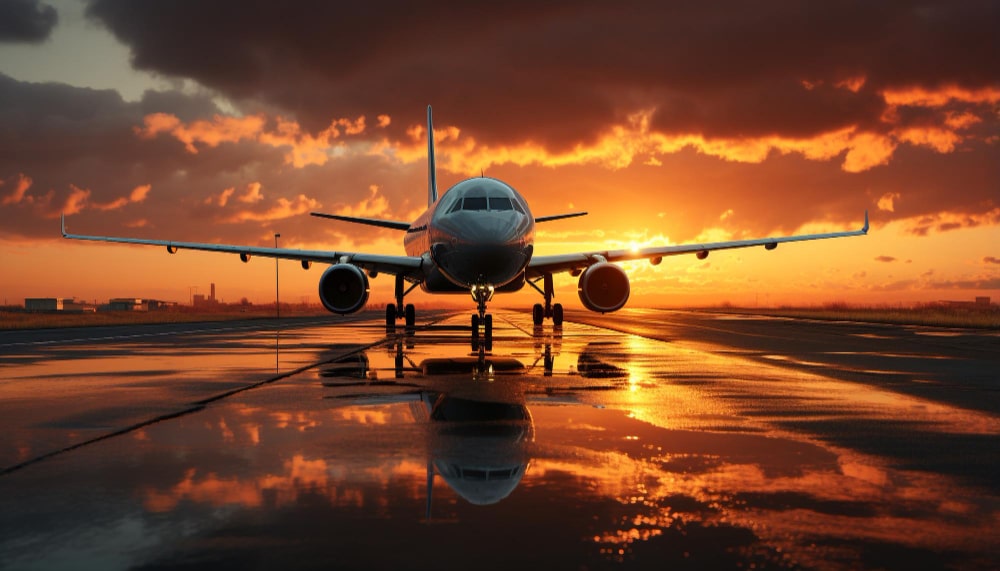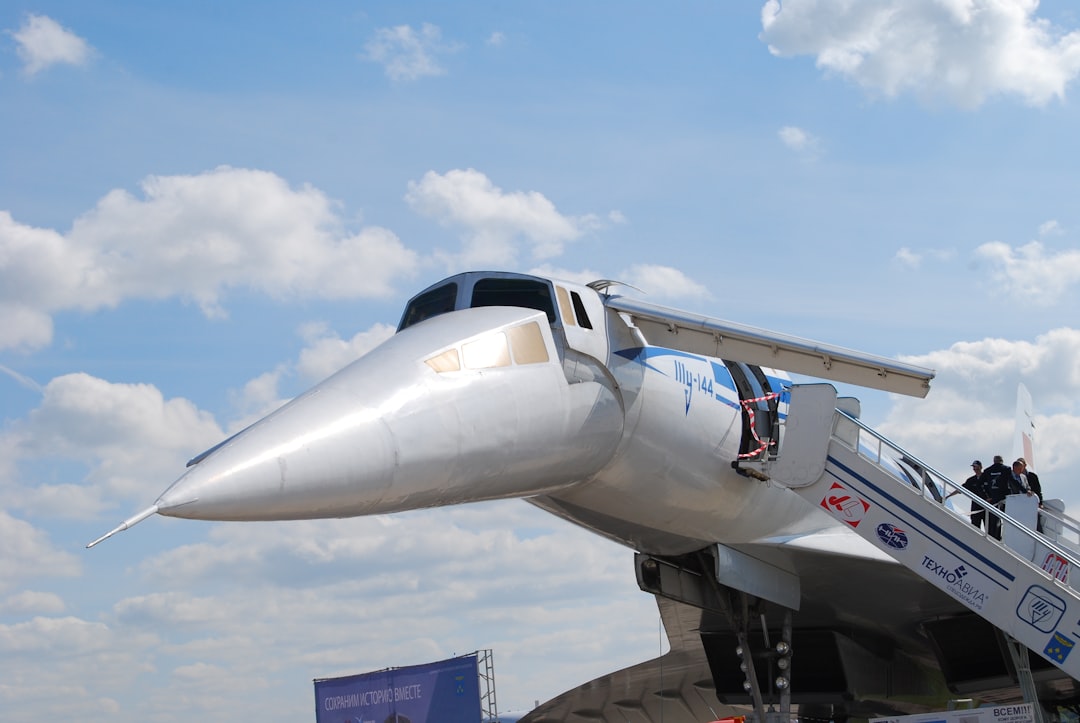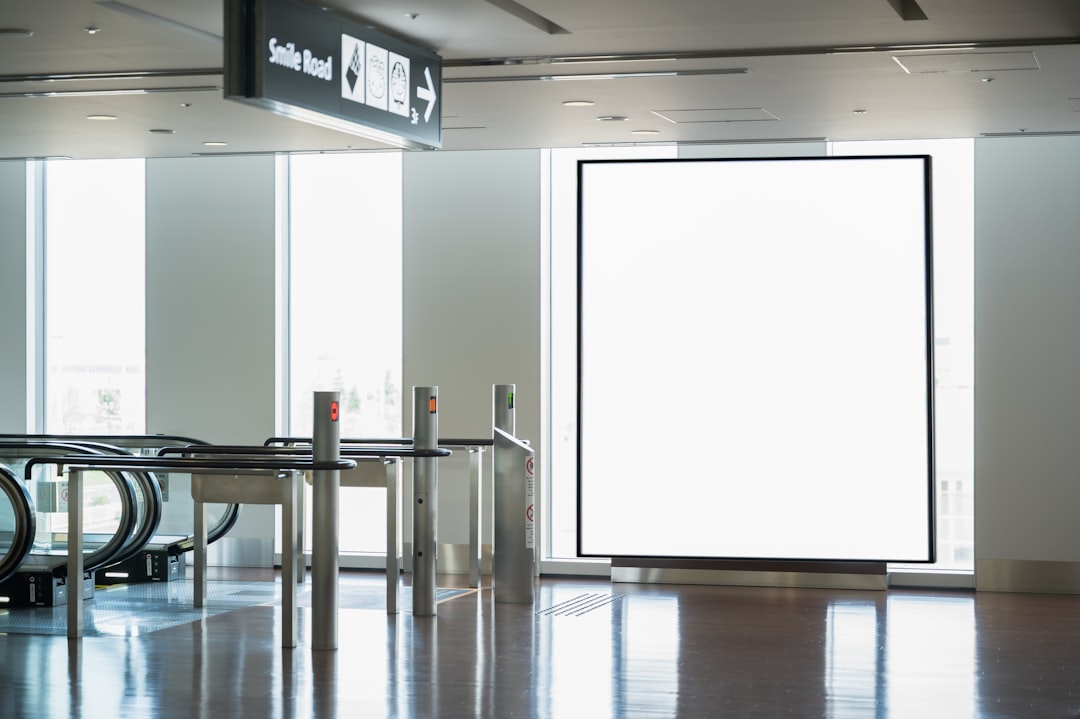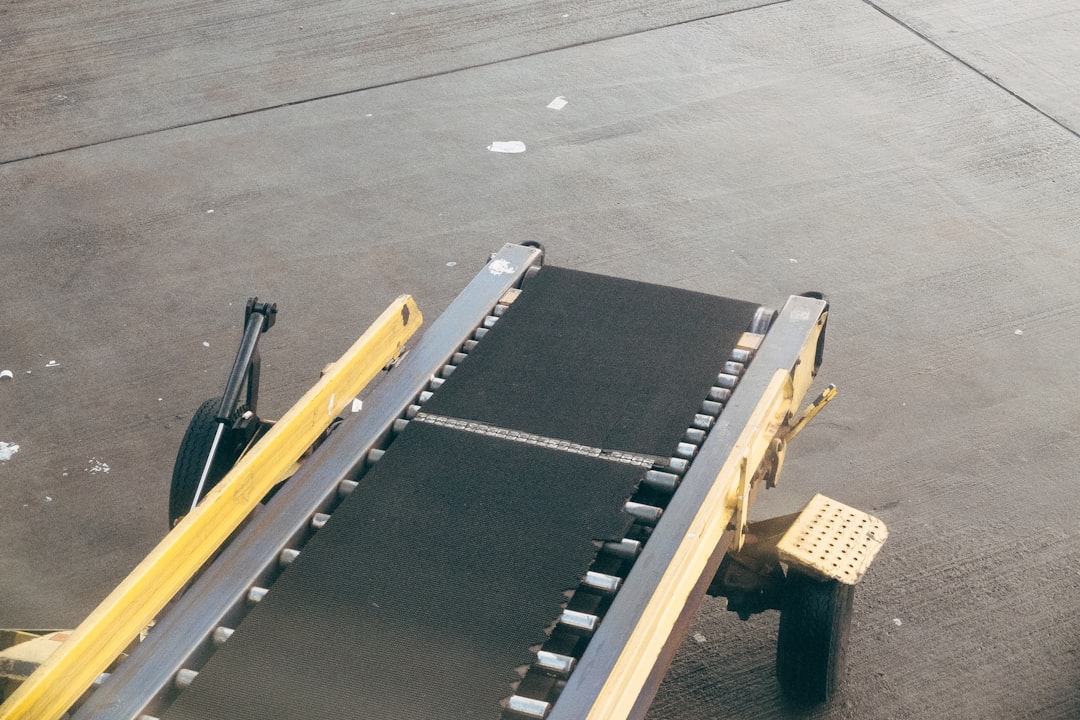The article discusses the future of flights, including innovations and technologies such as sustainable aviation, supersonic flights, electric and hybrid aircraft, autonomous flights, space tourism, biometric technology, personalized services, advanced in-flight entertainment systems, robotics and automation in airports, sustainable mobility, and the future outlook for aviation technologies.
Overview of the Evolving Aviation Industry
The future of the aviation industry is poised for significant transformation, driven by a convergence of innovative technologies, sustainable practices, and a steadfast commitment to safety and efficiency. Collaboration between the private sector and government entities is instrumental in shaping the trajectory of aviation advancements. This partnership fosters an environment conducive to groundbreaking innovations that not only elevate the industry’s operational standards but also set new benchmarks for sustainable growth and environmental stewardship. As airlines embrace cutting-edge technologies such as robotics, AI, and alternative fuels, they pave the way for a future where air travel is not only efficient and reliable but also environmentally conscious and forward-thinking.
One tangible example of this collaboration is the development and implementation of sustainable aviation technologies aimed at reducing the industry’s carbon footprint and enhancing operational efficiency. Airlines are investing in fuel-efficient and electric/hybrid planes as key strategies to mitigate emissions and lower fuel costs significantly. Companies like Ampaire are at the forefront of this sustainable aviation movement, showcasing the potential of electric planes to revolutionize air travel by offering eco-friendly and cost-effective solutions for airlines and passengers alike. These sustainable aviation efforts underscore the industry’s commitment to environmental responsibility and set the stage for a more sustainable and eco-conscious aviation sector.
Furthermore, the demand for air transport is projected to surge in the coming years, leading to job creation and GDP growth within the aviation sector. This growth trajectory underscores the vital role that aviation plays in global connectivity, economic prosperity, and societal development. By leveraging advancements in robotics, AI, and alternative fuels, the industry is poised to meet the evolving needs of passengers while contributing to job creation and economic development on a global scale. The collaborative efforts between industry stakeholders and government bodies are pivotal in ensuring that the future of flights is marked by innovation, sustainability, and a steadfast commitment to excellence.
The aviation industry is on the cusp of a transformative era, driven by a shared vision of pioneering technologies and sustainable practices that will redefine the future of air travel. By fostering collaboration between key stakeholders and embracing innovation, the industry is poised to usher in a new era of aviation that is not only efficient and safe but also environmentally conscious and passenger-centric. As airlines continue to invest in cutting-edge technologies and sustainable solutions, the future of flights holds immense promise for a more connected, sustainable, and visionary aviation ecosystem.
Sustainable Aviation Technologies
Fuel-efficient and electric/hybrid planes are at the forefront of sustainable aviation technologies, offering a promising glimpse into a future where air travel is not only efficient but also environmentally friendly and cost-effective. By investing in sustainable aviation efforts, airlines are taking proactive steps to reduce their carbon footprint, lower fuel costs, and promote eco-friendly practices within the industry. Companies like ZeroAvia are leading the charge in developing hydrogen-electric powertrains for aircraft, setting a new standard for zero-emission flights and sustainable air travel.
One notable example of sustainable aviation technologies gaining traction is the adoption of advanced materials and propulsion systems to enhance aircraft performance while minimizing environmental impact. These technological advancements are revolutionizing the industry’s approach to sustainability, paving the way for greener and more efficient air travel solutions. By leveraging innovative materials and propulsion systems, airlines can achieve significant reductions in emissions and operational costs, aligning with global efforts to combat climate change and promote sustainable aviation practices. The integration of sustainable aviation fuels is another key strategy being embraced by airlines to lower emissions and foster eco-friendly air travel.
Moreover, the aviation industry’s commitment to sustainability extends beyond the use of alternative fuels to encompass a holistic approach towards environmental stewardship. Airlines are actively exploring ways to reduce their carbon footprint through initiatives such as biofuel blending and carbon offset programs, demonstrating a concerted effort to address environmental concerns and promote sustainable aviation practices. These sustainable aviation technologies not only contribute to lowering emissions and mitigating environmental impact but also position the industry for long-term viability and resilience in the face of evolving global challenges.
Supersonic Flights
Supersonic flights represent a paradigm shift in air travel, offering unprecedented speed and efficiency for long-haul journeys. Companies like Boom Supersonic and Aerion Supersonic are at the forefront of developing next-generation supersonic aircraft that have the potential to revolutionize the aviation industry. For instance, the Boom Overture is designed to reach speeds of Mach 2.2, enabling passengers to travel from New York to London in just three and a half hours, significantly reducing travel times and enhancing connectivity between major cities.
The return of supersonic flights not only promises faster and more efficient air travel options but also underscores the industry’s commitment to innovation and passenger experience. Aerion Supersonic’s AS2 aircraft, for example, aims to provide a luxurious and sustainable travel experience by combining speed with state-of-the-art amenities and eco-friendly technologies. These advancements in supersonic flight technology are reshaping the future of air travel, offering passengers a glimpse into a world where long-distance journeys are completed in a fraction of the time it takes with conventional aircraft.
Moreover, supersonic flights are not just about speed but also about redefining the travel experience for passengers. Companies like Boom Supersonic and Aerion Supersonic are focusing on creating aircraft that offer comfort, luxury, and sustainability in addition to speed. By integrating cutting-edge technologies and innovative design features, these companies are setting new standards for air travel that prioritize efficiency, passenger satisfaction, and environmental responsibility. As supersonic flights continue to evolve and gain popularity, the future of air travel is poised to be faster, more convenient, and more interconnected than ever before.
 Electric and Hybrid Aircraft
Electric and Hybrid Aircraft
The advancements in electric and hybrid aircraft are driving a sustainable revolution in the aviation industry, with companies like Ampaire leading the way in developing eco-friendly and cost-effective solutions for air travel. Electric propulsion systems and hybrid-electric aircraft designs are key innovations that are reshaping the future of flights by reducing environmental impact and enhancing energy efficiency. These technologies represent a significant step towards achieving carbon neutrality and sustainability within the aviation sector, aligning with global efforts to combat climate change and promote greener air travel practices.
The integration of battery technology in aircraft design is enabling the development of electric planes with longer flight ranges and reduced emissions, marking a significant milestone in the industry’s transition towards sustainable aviation practices. For instance, companies like Ampaire are pioneering the use of electric planes to not only reduce carbon emissions and noise pollution but also to offer airlines a viable and cost-effective alternative to traditional fossil fuel-powered aircraft. These electric and hybrid aircraft designs showcase the industry’s commitment to innovation, sustainability, and environmental responsibility, setting new standards for eco-conscious air travel in the 21st century.
Hybrid-electric aircraft are not only environmentally friendly but also offer enhanced energy efficiency and operational flexibility for airlines. By combining traditional fuel sources with electric power systems, these aircraft can achieve significant reductions in fuel consumption and emissions while maintaining the performance and reliability expected by airlines and passengers. The integration of electric propulsion systems in aircraft design is a game-changer in the industry’s efforts to minimize its environmental footprint and embrace sustainable aviation practices, heralding a new era of cleaner, greener, and more efficient air travel solutions.
Autonomous Flights
Autonomous flight technologies are revolutionizing the aviation industry by enhancing safety measures, operational efficiency, and decision-making processes in flight operations. Companies like Airbus and Boeing are investing in autonomous systems to optimize pilot assistance, flight management capabilities, and route planning. For example, Airbus has been at the forefront of developing autonomous taxi, takeoff, and landing systems that aim to streamline aircraft operations and improve precision in flight maneuvers, ultimately enhancing safety and efficiency in aviation.
The implementation of artificial intelligence (AI) and machine learning algorithms in autonomous systems is poised to redefine the future of air travel by enabling real-time decision-making and predictive maintenance solutions. By leveraging AI-driven technologies, airlines can proactively address maintenance needs, optimize flight paths, and enhance navigation systems to ensure optimal performance and safety standards. The incorporation of autonomous systems in aircraft operations not only reduces human error but also enhances operational efficiency, cost-effectiveness, and passenger safety during flights.
Moreover, the future of aviation may see the introduction of fully autonomous cargo flights and passenger aircraft, revolutionizing the industry’s approach to route optimization, operational costs, and safety standards. By integrating autonomous technologies into flight management systems, airlines can achieve unprecedented levels of operational efficiency, reliability, and safety, paving the way for a more streamlined and efficient air travel ecosystem. The ongoing advancements in autonomous flight capabilities underscore the industry’s commitment to innovation, safety, and excellence, positioning aviation for a transformative era of autonomous operations and intelligent aviation solutions.
Space Tourism
Space tourism is no longer a distant dream but a tangible reality, with companies like SpaceX and Blue Origin pioneering commercial space travel experiences for civilians. SpaceX’s Crew Dragon spacecraft and Blue Origin’s New Shepard suborbital rocket have successfully demonstrated the feasibility of space tourism operations, opening up new frontiers for leisure travel beyond Earth’s atmosphere. These companies are at the forefront of the space tourism industry, offering passengers the opportunity to experience space travel firsthand and witness the beauty of the cosmos from a unique vantage point.
Advances in space technology and infrastructure are driving the commercialization of space tourism, making it a viable industry for future exploration and leisure activities. Spaceport America in New Mexico, for example, is a state-of-the-art commercial spaceport designed to accommodate various space tourism activities, including suborbital flights and scientific research missions. The integration of reusable rocket technology is lowering the costs of space tourism and expanding opportunities for space travel enthusiasts, making space exploration more accessible and inclusive for a broader audience.
Furthermore, space tourism companies are not only focusing on transportation but also on creating immersive and unforgettable experiences for passengers. Companies like SpaceX and Blue Origin are designing spacecraft with luxurious amenities, spacious cabins, and panoramic views of Earth to offer passengers a once-in-a-lifetime journey beyond the confines of our planet. The future of space tourism holds immense promise for travelers seeking unique and transformative experiences, with companies continually innovating and pushing the boundaries of commercial space travel to make space exploration a reality for all.
Biometric Technology and Seamless Travel
Biometric technology is revolutionizing airport security and passenger identification processes, offering a seamless and secure travel experience for passengers worldwide. By incorporating facial recognition and fingerprint scanning technologies, airports are streamlining the check-in and boarding processes, reducing wait times, and enhancing security measures. For instance, major airlines like British Airways and Delta Air Lines have implemented biometric boarding gates in select airports, allowing passengers to board their flights swiftly and securely using facial recognition technology.
The use of biometric authentication technologies like facial recognition is not only enhancing airport security but also improving the overall travel experience for passengers. Biometric-enabled e-gates and kiosks are becoming standard features at airports, providing travelers with a contactless and efficient journey from check-in to boarding. These advancements in biometric technology are setting new standards for seamless and secure travel experiences, aligning with the industry’s commitment to innovation, efficiency, and passenger-centric services.
Moreover, biometric data for passenger identification and verification is playing a crucial role in shaping the future of aviation by offering personalized and secure travel solutions. Airlines are leveraging biometric technologies to enhance the overall passenger experience, reduce wait times at airports, and streamline security procedures. By implementing biometric-enabled e-gates and kiosks, airports are creating a more efficient and secure travel environment for passengers, ensuring a seamless and contactless journey from check-in to boarding. The integration of biometric technology into airport operations not only enhances security measures but also provides travelers with a modern and convenient travel experience that prioritizes safety, efficiency, and passenger convenience.
Personalized and Data-Driven Services
The integration of AI and machine learning algorithms in the aviation industry is revolutionizing passenger services and operational processes, offering personalized and data-driven solutions for airlines and travelers. By leveraging AI technologies, airlines can predict maintenance needs, optimize flight operations, and offer tailored services to passengers based on their preferences and historical data. These data-driven insights are transforming the aviation sector by enhancing operational efficiency, improving passenger experiences, and optimizing various facets of flight operations.
Data-driven analytics are playing a pivotal role in optimizing crew scheduling, aircraft maintenance, and passenger services within the aviation industry. Airlines are harnessing the power of big data to analyze passenger behavior, predict trends, and offer personalized services that cater to individual preferences. By leveraging data-driven insights, carriers can enhance crew scheduling processes, streamline aircraft maintenance procedures, and provide passengers with customized travel experiences that meet their unique needs and expectations. The integration of data analytics into airline operations not only enhances efficiency and reliability but also fosters a more personalized and seamless travel experience for passengers.
Furthermore, the aviation industry’s adoption of AI and machine learning algorithms is reshaping the landscape of in-flight entertainment systems, offering passengers a more immersive and engaging travel experience. Beyond virtual reality experiences and high-speed Wi-Fi connectivity, airlines are exploring the integration of augmented reality applications that provide interactive and personalized content for travelers. By partnering with technology companies, airlines can offer streaming services, live TV, and on-demand content as part of the in-flight entertainment package, catering to the diverse preferences and needs of modern travelers. These advancements in in-flight entertainment systems showcase the industry’s commitment to enhancing passenger experiences, leveraging technology, and providing innovative entertainment solutions onboard.
 Advanced In-Flight Entertainment Systems
Advanced In-Flight Entertainment Systems
The evolution of in-flight entertainment systems is at the forefront of enhancing the passenger experience and setting new standards for air travel amenities. Airlines are partnering with technology companies to offer a wide range of entertainment options, including virtual reality experiences, interactive content, and high-speed Wi-Fi connectivity that cater to the diverse preferences of modern travelers. By embracing cutting-edge technologies, airlines are transforming the in-flight entertainment landscape, making air travel more engaging, enjoyable, and personalized for passengers.
One notable example of advanced in-flight entertainment systems is the integration of augmented reality applications that provide immersive and interactive experiences for travelers. By leveraging augmented reality technology, airlines can offer passengers a unique and engaging entertainment experience that goes beyond traditional movie-watching or music-listening options. For instance, travelers may be able to explore virtual destinations, play interactive games, or participate in collaborative challenges with fellow passengers, creating memorable and enriching experiences onboard. These innovative applications of augmented reality in in-flight entertainment systems underscore the industry’s commitment to enhancing the passenger experience and providing cutting-edge entertainment solutions that set new benchmarks for air travel amenities.
Moreover, the future of in-flight entertainment systems is poised to offer passengers a more personalized and tailored experience through the integration of AI algorithms that analyze passenger preferences and behavior to curate bespoke entertainment options. By leveraging AI-driven technologies, airlines can provide passengers with content recommendations, interactive experiences, and personalized services that cater to individual preferences and enhance the overall travel experience. These data-driven insights not only elevate the in-flight entertainment offerings but also showcase the industry’s commitment to leveraging technology to create immersive, engaging, and memorable experiences for passengers. As airlines continue to invest in advanced in-flight entertainment systems, the future of air travel holds immense promise for a more interactive, entertaining, and personalized journey for travelers around the world.
 Robotics and Automation in Airports
Robotics and Automation in Airports
Robotics and automation are transforming airport operations and enhancing the passenger experience by offering efficient and innovative solutions for baggage handling, passenger flow, and airport logistics. Companies like Boston Dynamics have developed robotic baggage handlers that optimize luggage management processes, ensuring accurate and timely transfer of bags from check-in to the aircraft. These robotic systems not only streamline operations but also enhance efficiency and reliability in baggage handling, leading to improved customer satisfaction and operational performance.
One notable application of automation technologies in airports is the deployment of self-service kiosks equipped with AI technology that enable passengers to check-in, print boarding passes, and tag luggage independently. By offering self-service options, airports can empower travelers to navigate the check-in process more efficiently, reduce wait times, and enhance the overall travel experience. For example, airports like Amsterdam Airport Schiphol and Singapore Changi Airport have successfully implemented self-service kiosks, showcasing the seamless integration of technology and convenience for passengers. These advancements in automation not only streamline airport operations but also provide travelers with more control over their journey, enhancing efficiency and passenger satisfaction.
Furthermore, the integration of autonomous ground vehicles and drones in airport logistics is revolutionizing cargo handling processes, optimizing turnaround times, and increasing operational efficiency. By leveraging robotics and automation technologies, airports can enhance passenger flow, improve baggage handling procedures, and streamline logistics operations, leading to a more seamless and efficient travel experience for passengers. These advancements in robotics and automation not only reduce operational costs but also enhance the overall passenger experience, making air travel more convenient, efficient, and passenger-centric. As airports continue to embrace cutting-edge technologies, the future of air travel is set to be marked by innovation, efficiency, and automation solutions that elevate the travel experience for passengers worldwide.
 Sustainable Mobility and Economic Impact
Sustainable Mobility and Economic Impact
Sustainable mobility initiatives and eco-friendly airport infrastructure are driving a paradigm shift in the aviation industry, offering greener and more efficient solutions for ground transportation and airport operations. Airports are increasingly adopting electric ground vehicles and buses to reduce carbon emissions and promote cleaner air quality within airport premises. These sustainable mobility efforts not only contribute to environmental conservation but also support the industry’s commitment to reducing its carbon footprint and promoting eco-friendly practices on the ground.
One tangible example of sustainable mobility initiatives is the use of electric buses for ground transportation at airports, showcasing the industry’s commitment to reducing emissions and promoting clean energy solutions. By investing in electric ground vehicles, airports can lower their environmental impact, improve air quality, and create a more sustainable travel environment for passengers and employees. These sustainable mobility practices not only align with global sustainability goals but also position the industry as a leader in environmental stewardship and innovation, setting new standards for sustainable ground operations within the aviation sector.
Moreover, the economic impact of sustainable aviation practices extends beyond environmental benefits to encompass job creation, economic growth, and community development. By investing in green technologies and sustainable infrastructure, the aviation industry creates new job opportunities in sectors like renewable energy, electric vehicle manufacturing, and sustainable materials development. These job creation initiatives not only stimulate economic growth but also support local communities, fostering innovation and prosperity in regions where sustainable aviation practices are implemented. Additionally, the shift towards eco-friendly operations enhances the industry’s reputation, attracting environmentally conscious travelers and investors who prioritize sustainability in their travel decisions. By embracing sustainable mobility practices, the aviation industry not only promotes environmental conservation but also contributes to economic development, job creation, and community well-being, ensuring a more sustainable and prosperous future for aviation.
Future Outlook for Aviation Technologies
The future of aviation is defined by a commitment to innovation, sustainability, and safety, driving the industry towards new horizons of technological advancement and operational excellence. Continued research and development in aerospace engineering, propulsion systems, and materials science are poised to revolutionize aircraft design and performance, setting new standards for efficiency, reliability, and sustainability. By fostering collaboration between industry stakeholders, regulatory bodies, and technology providers, the aviation industry is shaping a future that is characterized by cutting-edge technologies, sustainable practices, and a steadfast commitment to innovation and safety.
One key trend shaping the future of aviation is the development and adoption of advanced technologies such as robotics, AI, and alternative fuels that are reshaping the aviation landscape and ensuring sustainable growth and efficiency. For instance, airlines are investing in fuel-efficient and electric/hybrid planes to reduce their carbon footprint and enhance operational efficiency, aligning with global efforts to combat climate change and promote eco-friendly air travel. These advancements in aviation technologies underscore the industry’s commitment to innovation, sustainability, and excellence, setting new benchmarks for the future of air travel.
Furthermore, the future of aviation is marked by a convergence of technologies and trends that prioritize passenger experience, environmental responsibility, and operational efficiency. From supersonic flights to autonomous aircraft operations, the aviation industry is poised to undergo transformative changes that will redefine the way we travel and experience air transportation. Companies like Boom Supersonic, Ampaire, and SpaceX are leading the charge in innovation, pushing the boundaries of what is possible in aviation and space travel.
As we look ahead, collaboration between industry stakeholders and government entities will be crucial in shaping the trajectory of aviation technologies and practices. Regulatory frameworks that support innovation while ensuring safety and environmental sustainability will play a pivotal role in driving progress and fostering a conducive environment for technological advancements in the aviation sector. By working together towards common goals, the industry can unlock new opportunities for growth, efficiency, and sustainability, ultimately shaping a future where air travel is not only efficient and safe but also environmentally conscious and passenger-centric.
In conclusion, the future of flight holds immense promise for a more connected, sustainable, and visionary aviation ecosystem. By embracing innovation, sustainability, and collaboration, the aviation industry is poised to usher in a new era of air travel that redefines the way we experience and interact with the world. From supersonic speeds to eco-friendly electric planes, the possibilities are endless, and the future of aviation is brighter than ever before.





 Electric and Hybrid Aircraft
Electric and Hybrid Aircraft Advanced In-Flight Entertainment Systems
Advanced In-Flight Entertainment Systems Robotics and Automation in Airports
Robotics and Automation in Airports Sustainable Mobility and Economic Impact
Sustainable Mobility and Economic Impact